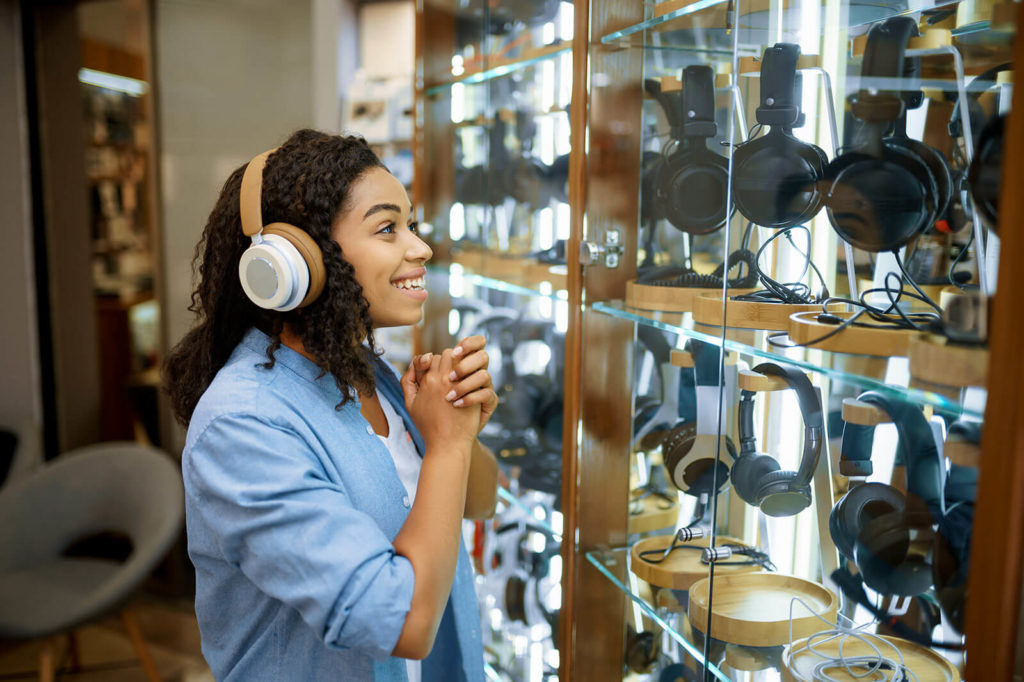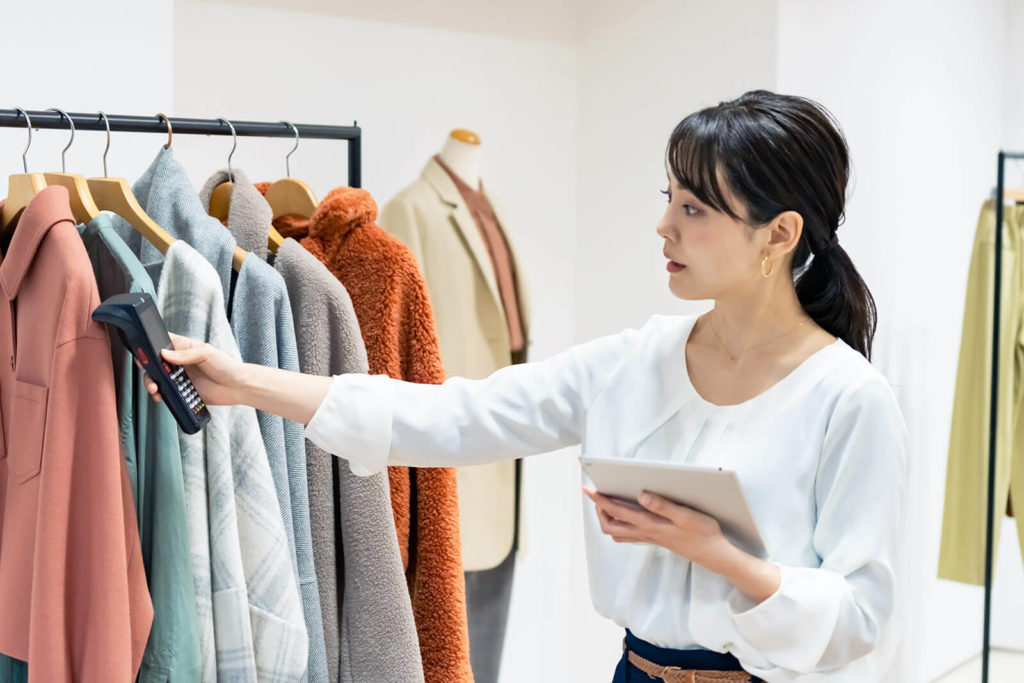How will retail design work in 2023? That is the question that a large part of the sector, just a few weeks before the end of 2022, is asking itself.
After the paradigm shift with Covid-19, accelerating and modifying consumer buying habits, as well as consumption itself and the values pursued by the customer, 2023 will involve taking on new realities. Therefore, at CAAD we want to anticipate the retail trends of 2023, with a special focus on business design and the challenges that the industry faces in order to transform itself once again.
1. Technology and e-commerce from the shop
The physical shop and the digital store are doomed to understand each other, to support each other, to take advantage of the benefits they offer. Especially when most studies suggest that online shops will generate almost 25% of total sales in the retail sector by 2025, or in other words: from that year onwards, one out of every four purchases will be made over the Internet. And Spain is one of the 15 most important markets for e-commerce sales.
What retail design must propose in 2023, whether by personal choice or by obligation, is a symbiosis in the physical shop with the technologies and advantages of the digital shop. For example: the Beacon network, known as Bluetooth Low Energy (BLE) applications, allows any brand, retailer, app or platform to understand exactly where a customer is in the physical shop and deliver a personalised experience.
This is a great enhancement to the shopping experience for the consumer, such as the generation of personalised offers and discounts to reward customer loyalty.

Augmented reality is another of the most interesting tools to, without going any further, see how stands or products can be positioned through 3D technology. It also allows us to see more realistically how the clothes we want to buy would look on us in the shop itself, but without having to try them on.
Another technological element that is already being deployed in retail chains around the world is robotics. The use of robots in shops is part of the wave of change on the physical experience, the generational change of employees, and the logistical improvement in search of greater efficiency.
The Beacon network, known as Bluetooth Low Energy (BLE) applications, allows any brand, retailer, app or platform to understand exactly where a customer is in the physical shop and deliver a personalised experience.
2. SDGs, sustainability and environmental care
We never tire of saying it. A retailer’s commitment to sustainability, the UN Sustainable Development Goals (SDGs), and its ability to reflect this, can make all the difference in a consumer’s choice to buy products.
Concern for the environment is behind much of the shopping experience of customers, who more than ever demand recyclable packaging, production models based on returnable items, supporting care for the environment, reducing impact… There is a huge real interest in moving towards production and consumption models that respect nature. Here, retailers have a golden opportunity to differentiate themselves as a business, create value and engagement and establish long-term relationships with both suppliers and customers. To achieve this, they need to commit to the circular economy right from the start – and know how to reflect this.

In this area, concepts such as reconditioned technology are also advancing, because they combine the reuse of elements that are difficult to recycle and recover with the attraction for the customer of acquiring valuable products at a lower price while contributing to better conservation of the planet.
Retailers have a golden opportunity to differentiate themselves as a business, create value and engagement and establish long-term relationships with both suppliers and customers.
3. Fostering a “personal connection” with the brand
Personal connections with brands to build brand loyalty are already, and will become even more so, a trend in retail. According to Qualtrics’ Global Consumer Trends Report 2023, consumers are increasingly looking for a human connection in their interactions with brands, to the extent that having individual, personalised, empathetic and convenient service matters more to customers than having a short wait time.
The report insists that consumer loyalty will be earned through personal connections with organisations. In other words, retail cannot afford to lose sight of the overall customer experience by focusing solely on economic efficiency objectives. And they give some data: in Spain, when a consumer talks to an empathetic agent/worker, they are 5.2 times more likely to be satisfied with the overall brand experience than those consumers who were unhappy with the employee’s attention.

This is also related to customer loyalty. With inflation and price increases, the flexibility shown so far will not be as good when there are staffing problems or poor service. The blow to the pocket is also a blow to patience when it comes to shopping. We now think much more about costs, and these can be skewed to one side or the other depending on the creditworthiness of customer service and an overall good shopping experience.
Finally, within this union, business must be built on the creation of a company philosophy. In other words: create value by positioning yourself as a company with “x” values and ideas.
Retail cannot afford to lose sight of the overall customer experience by focusing solely on economic efficiency objectives.
4. Exploiting data as part of the business model
Within the phygital connection in which the retail sector is immersed, obtaining, analysing, channelling and taking advantage of the thousands of data that can be obtained 24/7 from purchases, sales, shop traffic, returns, etc. is a spectacular tool for optimising processes, services and strategies. It means knowing much more and much better how customers consume.
And in this sense, in-store distribution, seasonal campaigns, and in short, sales strategies in physical commerce, must have this key information in order to sell more.

At the same time, investing and investing in this technology will allow personalised advertising, offers, brand proposals, as well as anticipating possible logistical errors, customer service, returns, product defects, etc.
In-store distribution, seasonal campaigns, and in short, sales strategies in physical commerce, must have this key information in order to sell more.
5. The boost of RFID technology
Zebra Technologies recently held the RFID Summit, an event that served to analyse the present and future of the application of real-time tracking technologies such as RFID.
Such solutions can improve various stages of any business operation. Fundamentally, it provides security and better traceability, as well as helping managers to understand the information behind each product in order to make better decisions thanks to constant monitoring.

Specifically for the retail sector, RFID is an excellent ally in anti-theft systems, dynamic price control, implementation of new payment solutions, and product returns.
Within the retail sector, this trend is also key to choose one design or another in the shop, taking into account the surfaces to be scanned, special tags, the environment where this technology will be applied through sensors, printers, scanners, software or antennas.
It provides security and better traceability, as well as helping managers to understand the information behind each product in order to make better decisions thanks to constant monitoring.
Follow us in Twitter and Linkedin, sign up to our newsletter and you will keep up to date with trends and issues related to retail.

